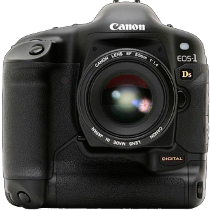|
What Photographers Use
Based on images we have printed, manipulated and worked on for other photographers.
| Cameras | |
| Canon | |
| EOS IDs ( Mark 11/111/1DX ) | 2 |
| EOS 5D ( Mark 11/111/1V ) | 7 |
| EOS 6D ( Mark 11) | 1 |
| EOS 10 series /10D/ 20D / 40D etc | 14 |
| EOS 100 series / 450D/550D etc | 2 |
| Compacts G series / IXUS etc | 7 |
| |
| Nikon | |
| D4 | 1 |
| D3 | 4 |
| D2x | 1 |
| D800 /D810 / D820 | 4 |
| D700 / D750 | 6 |
| D100 / D200 / D300 / D600 | 6 |
| D70 / D80 / D90 | 4 |
| |
| Sony Alpha A99 | 1 |
| Digital back on Hasselblad | 1 |
| Leica M9 | 1 |
| 5"x4" + scanning back | 1 |
| | - 33 Canons 15 different models
- 30 Nikons 14 different models
| | 
 |
Listed by the number of photographers , some will have more than one camera .
There is a mixture of photographers, some taking images for themselves to exhibit and sell, while many take pitures for other people. Cameras used for: Advertising, aerial, portrait, wedding , press, publication, theatre, sports, studio, travel, PR, art, picture libraries, wildlife, copying, exhibition and other photography.
We have listed 61 cameras, used by professional photographers, all digital.
Sales of film have fallen by 99% since the peak of 1999.
So few film cameras were sold in Japan in 2013 that the trade body CIPA (Camera & Imaging Products Association) has stopped compiling sales figures. |
|
 |
|
Of the DSLRs:
- 24 are considered 'professional' cameras
- 19 are considered 'prosumer' cameras
- The rest considered are midrange 'consumer' cameras
Pixel counts range from 6 - 36 mp
So why the range and why do different photographers use different cameras?
To understand this you need to know why the images are taken and what they will be used for.
|
|
 |
Typical use - Client requirements:
Most pictures are used at sizes no bigger than A4 or full page magazine size, a few may be printed up to 30"x20".
Probably 95% of all images taken will never be used larger than about A4 size
All commercial clients require a digital image, no one asks for prints or transparencies.
Now we look at the potential image use of different camera chip sizes.
A six mega pixel camera ( DSLR - APS-C ) gives an image 3000x2000 pixels ( 6 million pixels )
3000x2000 pixels gives an image of 10"x6.7" @ 300dpi - print size
Assuming you use a good lens and have good 'camera craft':
This will usually interpolate up to 3508x2480 pixels - A4 size @ 300dpi without noticeable loss of quality
So a 6 megapixel camera will give an image large enough to print full page in a typical magazine and is more than adequate to use on the web.
It will print through RIP software to 20"x13.5" without noticeable loss of quality
A 12 megapixel camera creates an image which is 4256x2832 pixels which is a print size of 14.25"x9.45"
More expensive cameras with more pixels will also do this.
What we call fit for purpose
From this you will see that a medium or low end DSLR is capable of producing images that cover 95% of the needs of most professional photographers, which is why they form the largest proportion of the cameras used.
As far as we are aware there is nobody in the area using a 'medium format' digital
A quick look at the costs suggests that if they only need one for a potential 5% of their work, to make it pay they would have to have a turnover of approx £200,000 per year or be working in a sector of the market that specialises in large high quality imaging.
Myth and reality
All of this perhaps challenges a few preconceived ideas.
Most images taken will never be used larger than 15"x10" therefore a high pixel count is NOT important
Any good DSLR - with a good lens is capable of producing a 15"x10" print you don't need 20mp
Learning your camera and 'digital darkroom' skills are vital to obtaining the best quality: the camera alone will not give you a good picture.
| 



